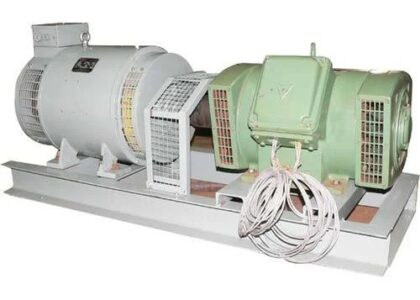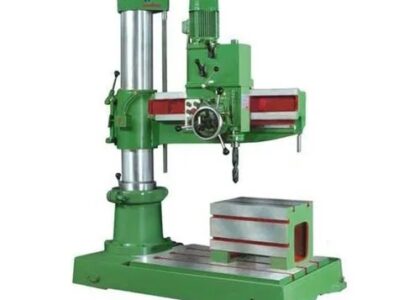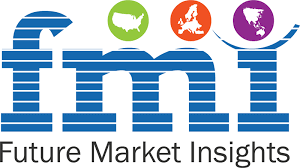The size of the world hemostasis testing systems market is anticipated to reach US$ 3,518.1 million by 2032 while growing at a CAGR of 5.5%. The demand for hemostasis testing systems has increased as a result of the rising blood loss from severe injuries brought on by accidents and other outside factors, which is what propels the worldwide hemostasis testing systems market. Additionally, hemostatic medications are mostly used to stop bleeding from minor wounds. In 2022, the market is anticipated to be worth US$ 2,059.6 million. The market showed a 4.8% growth rate from 2016 to 2021.
Modern hemostasis laboratories carry out a vast array of analyses to provide detailed and accurate diagnostic data. In addition to monitoring anticoagulant therapy with conventional or innovative anticoagulants, some standard and more specific tests can help detect and evaluate anticoagulant resistance.
Get a PDF Sample with Latest Market Insights! https://www.futuremarketinsights.com/reports/sample/rep-gb-1331
Most clinical laboratories are therefore equipped with high-throughput tests as the first line of defense. Over the past few decades, second-line tests have been available mostly at hemostasis centers, but now they’re becoming more common in routine labs. Technology advances at an exponential rate, and the status quo is pretty much unlikely to remain static in the near future with its progression. Further research into how hemostasis testing systems might change in the near future will help in designing next-generation coagulation analyzers for the market. While hemostatic agents perform inefficiently in chronic bleeding cases, there is still room for market growth for hemostasis testing systems.
What are the Factors that Contribute to the Growth of the Global Hemostasis Testing Systems Market?
Increasing demand for early disease detection and monitoring is resulting in a growing market for hemostasis testing systems in the market. A wide range of industry-first and innovative hemostasis testing solutions have been developed by key manufacturers to treat blood losses using advanced hemostasis tests.
The use of hemostasis testing systems can be used to address a variety of disorders and conditions of patients. In-vitro coagulation and fibrinolysis diagnostic testing systems are designed for assessing thrombosis and hemostasis through automated or semi-automated hemostasis testing. The increased understanding of hemostasis conditions is predicted to improve diagnostic rates as well as preventive care management, which, in turn, will result in an increase in the number of tests which will substantially increase the demand for these tests in the market.
Major factors contributing to the growth of the market are the increasing incidences of blood clotting diagnoses in patients who suffer from excessive blood loss during surgeries. With technological advancements such as automated blood coagulation analyzers introducing many novel diagnostics, the market will experience significant growth opportunities in the near future.
For More Report Customization, connect with us at! https://www.futuremarketinsights.com/customization-available/rep-gb-1331
The Centers for Disease Control and Prevention (CDC) has been developing, implementing, and maintaining a hemophilia surveillance program (monitoring) for more than 20 years to better understand this condition. A number of public health and clinical guidelines have been informed in part by data collected from UDC and Community Counts in an effort to mitigate hemophilia-related health problems. Approximately 400,000 people were affected by hemophilia in 2019, according to the National Hemophilia Foundation. As a result, around 75% of people with hemophilia in the world are still not receiving adequate treatment or are incurring difficulty accessing adequate treatment. This consequently affects market growth in a positive way.
What is Driving North America’s Hemostasis Testing System Market?
As per the forecast, the North American region will dominate the global hemostasis testing system market. In 2022, the region is expected to secure about 36.8% of the total market share. In order to maintain a dominant position for hemostasis testing equipment, the region has developed a well-established medical infrastructure and a proliferation of major players.
A large patient pool and the adoption of advanced automated analyzers have significantly raised the market for hemostasis testing systems. Moreover, clot disorders are increasing in prevalence, which is boosting hemostasis diagnosis demand. Hence, all of these factors are driving growth in these markets in these regions.
What Role has Asia-Pacific Played in the Growth of the Hemostasis Testing Systems Market?
According to the analysis, Asia-Pacific is projected to be the second-largest market during the forecast period. Due to the increasing income levels in China and India that are having a direct impact on health care expenditures in emerging economies, the Asian Pacific region is expected to outperform all other regions in terms of growth.
In addition, changing lifestyles have led to an increase in dietary-related diseases. Thus, there has been an intensification of research initiatives in the biopharmaceutical sector, resulting in additional funds being allocated to the sector. The Asia Pacific hemostasis testing devices market is likely to be boosted by government initiatives to develop healthcare infrastructure and the shift of pharmaceutical companies into developing nations.
Ask from Market Research Expert! https://www.futuremarketinsights.com/ask-question/rep-gb-1331
What Role do Start-up Companies Play in Enhancing Hemostasis Testing System Sales?
As healthcare continues to flourish, the demand for safe, effective medical devices continues to increase. As a result of numerous innovative approaches to medicine, there have been numerous breakthroughs in the medical field in order to reduce side effects and improve long-term outcomes. This is the case when incorporating solutions such as hemostasis testing systems in the market. With start-ups realizing their potential, they are firmly establishing themselves on the global market. Some notable hemostasis testing systems start-up manufacturers are as follows:
- GeTein BioMedical, founded in 2002 in the United States, specializes in manufacturing and marketing diagnostic test kits for diagnostics, molecular diagnostics applications and clinical chemistry, and raw materials of both biological and non-biological origin for pharmaceuticals, diagnostics, and academic research.
Competition Analysis:
Key players in the global hemostasis testing systems market include Werfen, Medtronic, Siemens Healthcare GmbH, Haemonetics Corporation, Roche Diagnostics Limited, Sysmex, Abbott Laboratories, Nihon Kohden Corporation, Beckman Coulter, Inc., Grifols, S.A.., BioMarin Pharmaceutical, Inc., Sanofi, and GeTein BioMedical.
- In January 2022, Werfen received FDA clearance for the GEM Hemochron 100 whole blood hemostasis system (510(k)). GEM Hemochron 100 system utilizes leading Hemochron technology to deliver fast, actionable activated clotting time (ACT) results within minutes, providing information for patient management and improving workflow at the point of care (POC). A major European country is currently using the GEM Hemochron 100 system. In 2022, it will be commercialized in the US.
- In May 2022, a Phase 1/2 open-label study conducted by BioMarin Pharmaceutical Inc. revealed updated results, indicating that valoctocogene roxaparvovec, an investigational gene therapy treatment for hemophilia A in adults, has been observed for the longest amount of time. An oral presentation of the data was given by the company at the upcoming congress of the International Society on Thrombosis and Haemostasis (ISTH) 2022. A sustained hemostatic efficacy was demonstrated with valoctocogene roxaparvovec for six and five years following treatment in the 6e13 vg/kg and 4e13 vg/kg cohorts, respectively.
- In July 2022, Sanofi launches a hemophilia duo for patients hoping to live a normal life. Effanesoctocog alfa and fitusiran are Sanofi’s blood disorder treatments that are making their way to regulators.
To Available Discount on Report, Click!
https://www.futuremarketinsights.com/checkout/1331
Key Segments Profiled in the Global Hemostasis Testing Systems Market
Hemostasis Testing Systems Market by Application Type:
- Hemophilia in Hemostasis Testing Systems
- Von Willerbrand Disease in Hemostasis Testing Systems
- Acquired Bleeding Disease in Hemostasis Testing Systems
Hemostasis Testing Systems Market by End Use Type:
- Hemostasis Testing Systems in Hospitals
- Hemostasis Testing Systems in Academic Institutions
- Diagnostics Laboratories in Hemostasis Testing Systems
Hemostasis Testing Systems Market by Region:
- North America Hemostasis Testing Systems Market
- Latin America Hemostasis Testing Systems Market
- Europe Hemostasis Testing Systems Market
- Asia Pacific Hemostasis Testing Systems Market
- Middle East & Africa Hemostasis Testing Systems Market
About Future Market Insights (FMI)
Future Market Insights, Inc. (ESOMAR certified, recipient of the Stevie Award, and a member of the Greater New York Chamber of Commerce) offers profound insights into the driving factors that are boosting demand in the market. FMI stands as the leading global provider of market intelligence, advisory services, consulting, and events for the Packaging, Food and Beverage, Consumer Technology, Healthcare, Industrial, and Chemicals markets. With a vast team of over 5000 analysts worldwide, FMI provides global, regional, and local expertise on diverse domains and industry trends across more than 110 countries.
Contact Us:
Future Market Insights Inc.
Christiana Corporate, 200 Continental Drive,
Suite 401, Newark, Delaware – 19713, USA
T: +1-845-579-5705
For Sales Enquiries: sales@futuremarketinsights.com
Website: https://www.futuremarketinsights.com
LinkedIn| Twitter| Blogs | YouTube




